Pecan tree care and growing guide: expert tips for success
Add a pecan tree to your yard and you could soon be enjoying up to fifty pounds of delicious home-grown nuts every year


If it’s possible to be patriotic about plants, then the pecan tree (Carya illinoinensis) is an indigenous species Americans should be proud of. Not only have these native nuts provided animal and human populations with nourishment for thousands of years, they’re also now widely recognized by dieticians as a superfood, being full of antioxidants.
Today, the US is the world’s top producer of pecans, and trees are grown commercially in 15 states. Over the years, nurserymen have selected superior cultivars that produce quality pecans, and there are now dozens of excellent varieties available.
They are deciduous not evergreen trees which produce delicious nuts from early fall. This is good news for home growers of pecans, for there will be a pecan tree that’s right for your growing space, provided you have enough a large enough yard and are in the correct USDA zone.
'If you haven’t had a fresh pecan, then you haven’t had a good pecan,' says Farmer David Hughes of Rock Bridge Trees nursery in Tennessee. 'Store-bought nuts do not compare with fresh pecans, which are lightly oily and have a floral nutty flavor.'
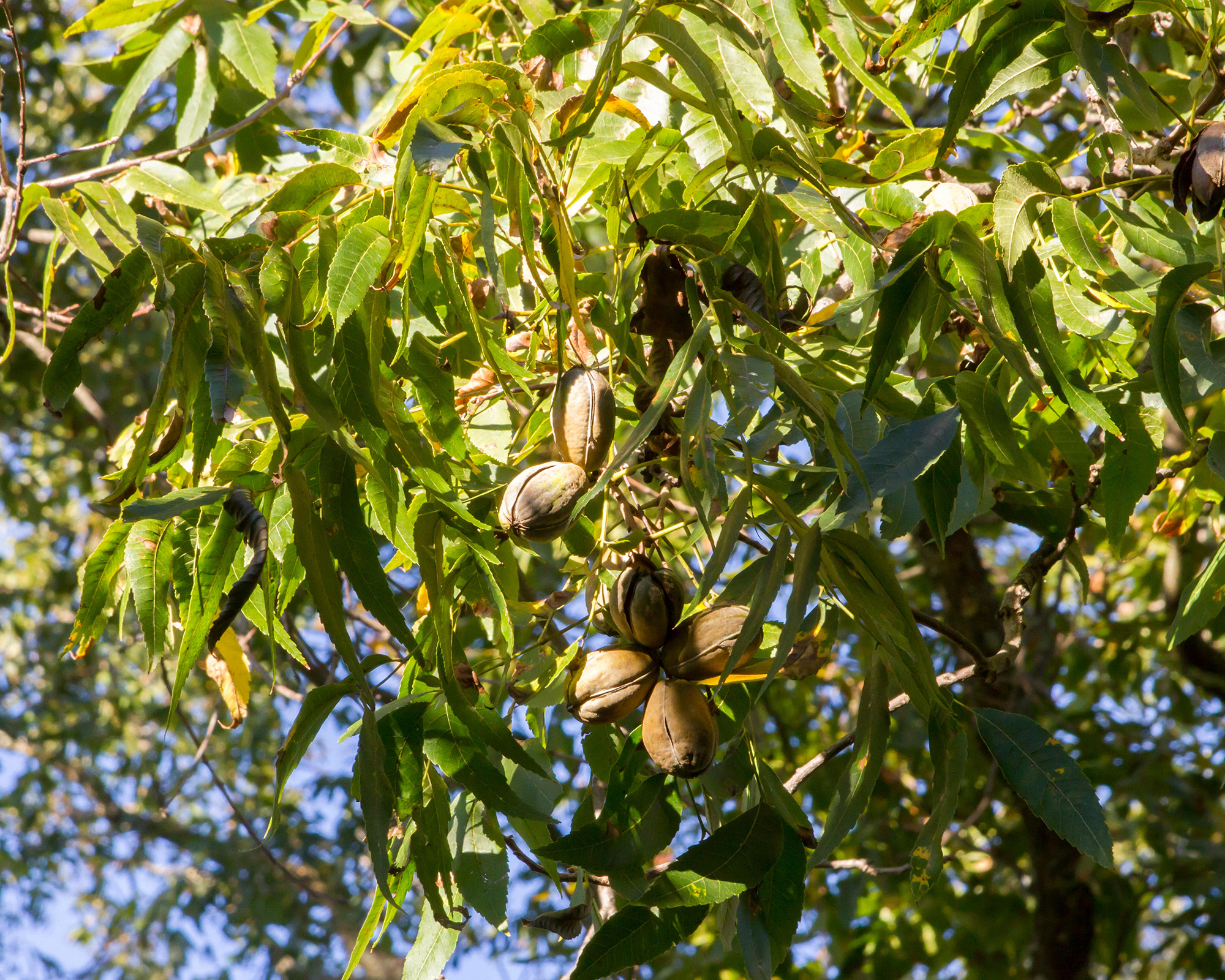
Pecan tree: key facts
- Plant type: Deciduous trees
- Mature size: Height 100ft (30m) x spread 65ft (20m)
- Soil type: Moist, fertile
- Soil PH: Slightly acidic to neutral
- Flowering time of year: Spring
- Nuts maturing time: Early-mid autumn
- Time of year to plant: autumn or winter
- Growth rate: Slow initially, then moderate
- Hardiness zones: USDA zones 5-9
- Scientific name: Carya illinoinensis
- Common name: Hickory, Pecan
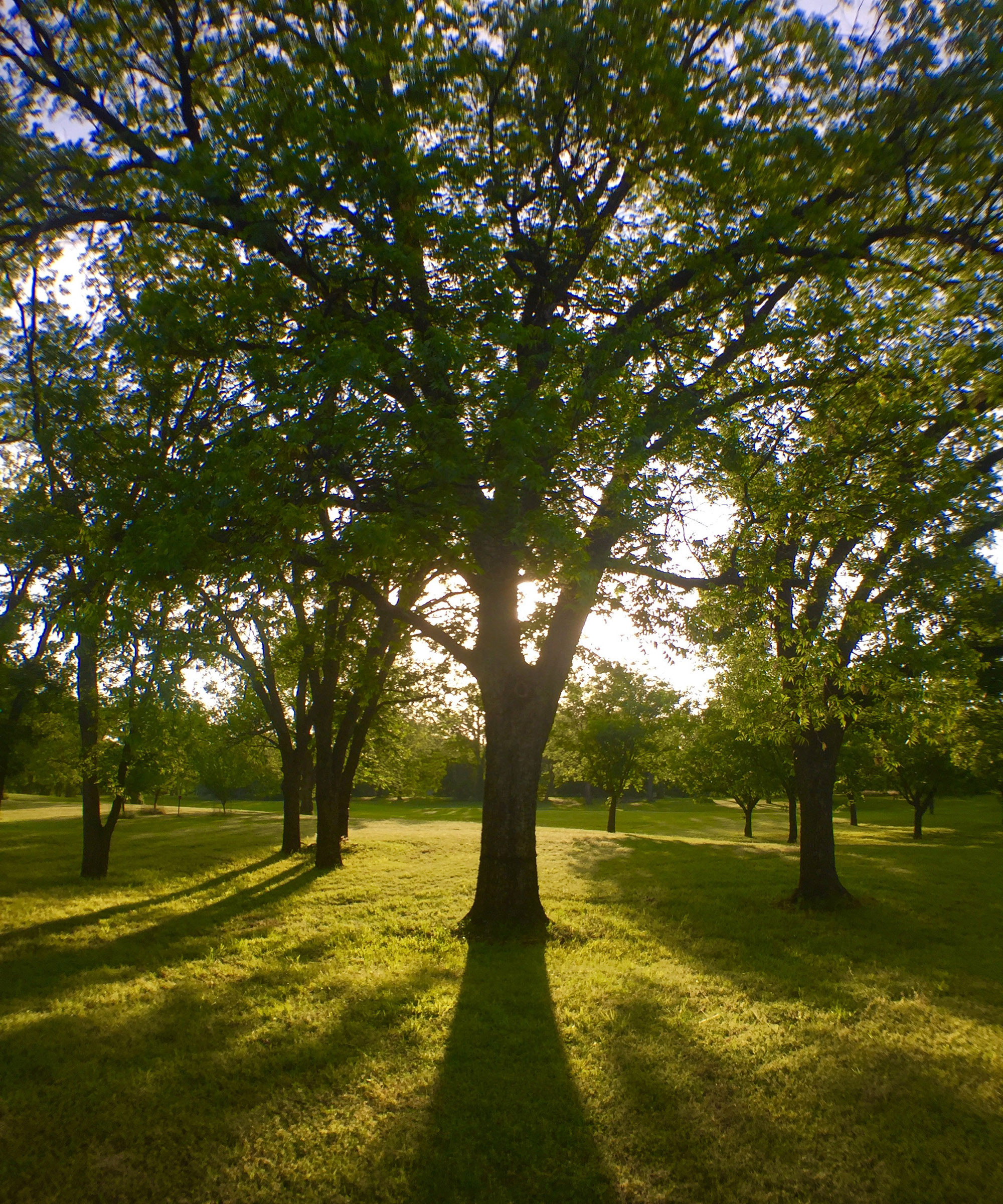
Types of pecan trees
Pecans are a type of hickory (genus Carya) and a member of the walnut family (Juglandaceae). The nuts are sweeter than walnuts and many other hickories, which explains their enduring popularity as backyard trees.
Carya illinoisnensis is indigenous only to North America and is the species that all commercial US cultivated varieties derive from. Other sweet-tasting species worth noting are shagbark (Carya ovata) and shellbark hickories (Carya laciniosa) – these are also native and are more reliable producers in northern areas.
Keen wildlife gardeners might prefer to plant the straight species of pecan (Carya illinoinensis) rather than cultivated varieties, something that Forrest Keeling Nursery in Missouri is keen to promote: 'Every native plant you add is a vital oasis for wildlife,' they say.
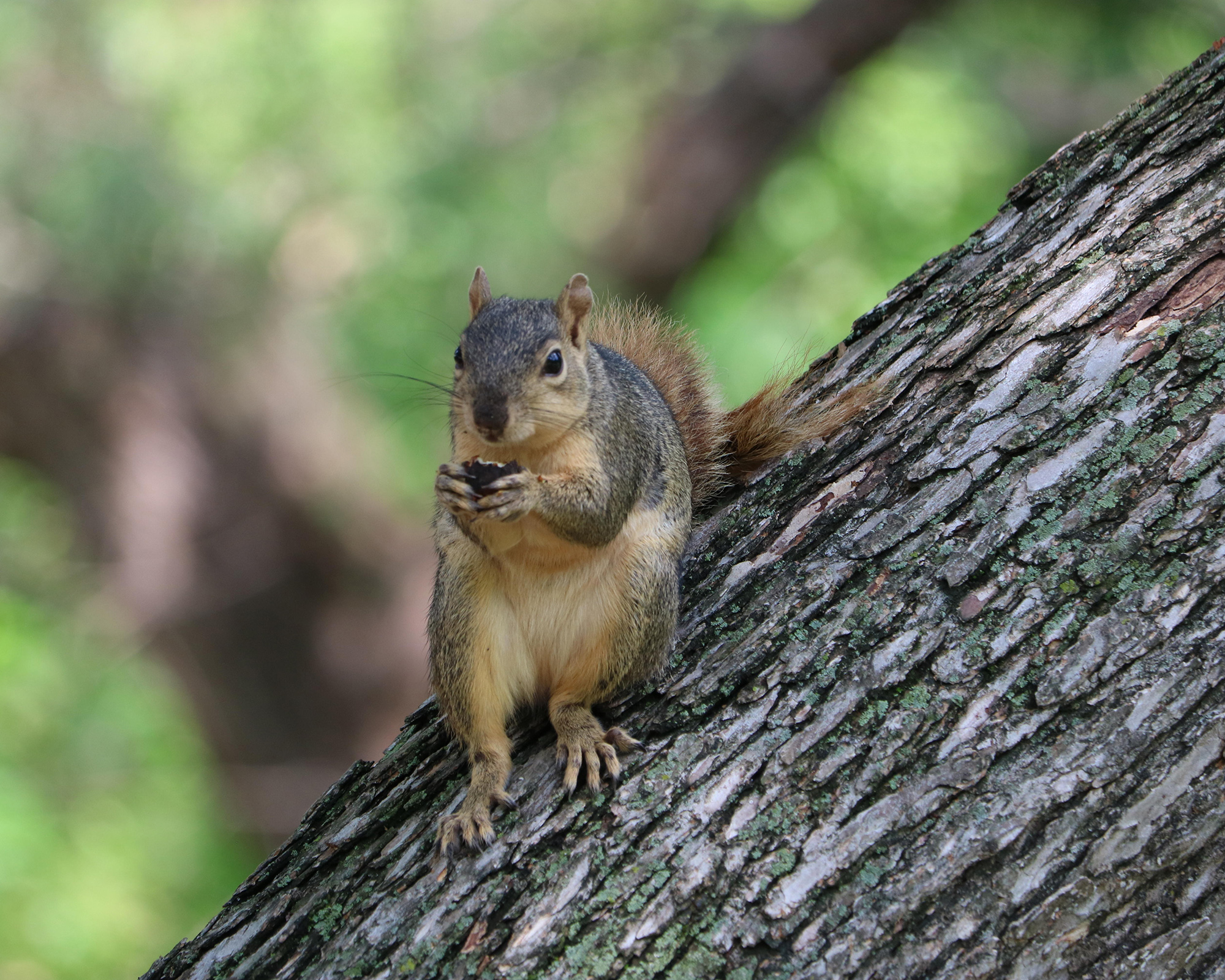
How to use pecan trees in your yard
Provided you have a large enough yard, pecan trees are suitable for home growers. There’s no getting away from the fact that these trees become majestic giants eventually, reaching 80ft to 100ft high after 20 or so years.
If you're searching for a tree for small gardens go for a variety like the Pawnee Pecan Tree from Fast Growing Trees, which grows to a more manageable height of 30ft (9m).
Generally pecan trees make great trees for shade and aren’t allelopathic like walnuts are, meaning other plants will happily grow nearby or as plants under trees.
Mature pecan trees have a symmetrical shape with huge crowns and arching branches. The attractive pinnate leaves are mid-green in summer, turning yellow in fall.
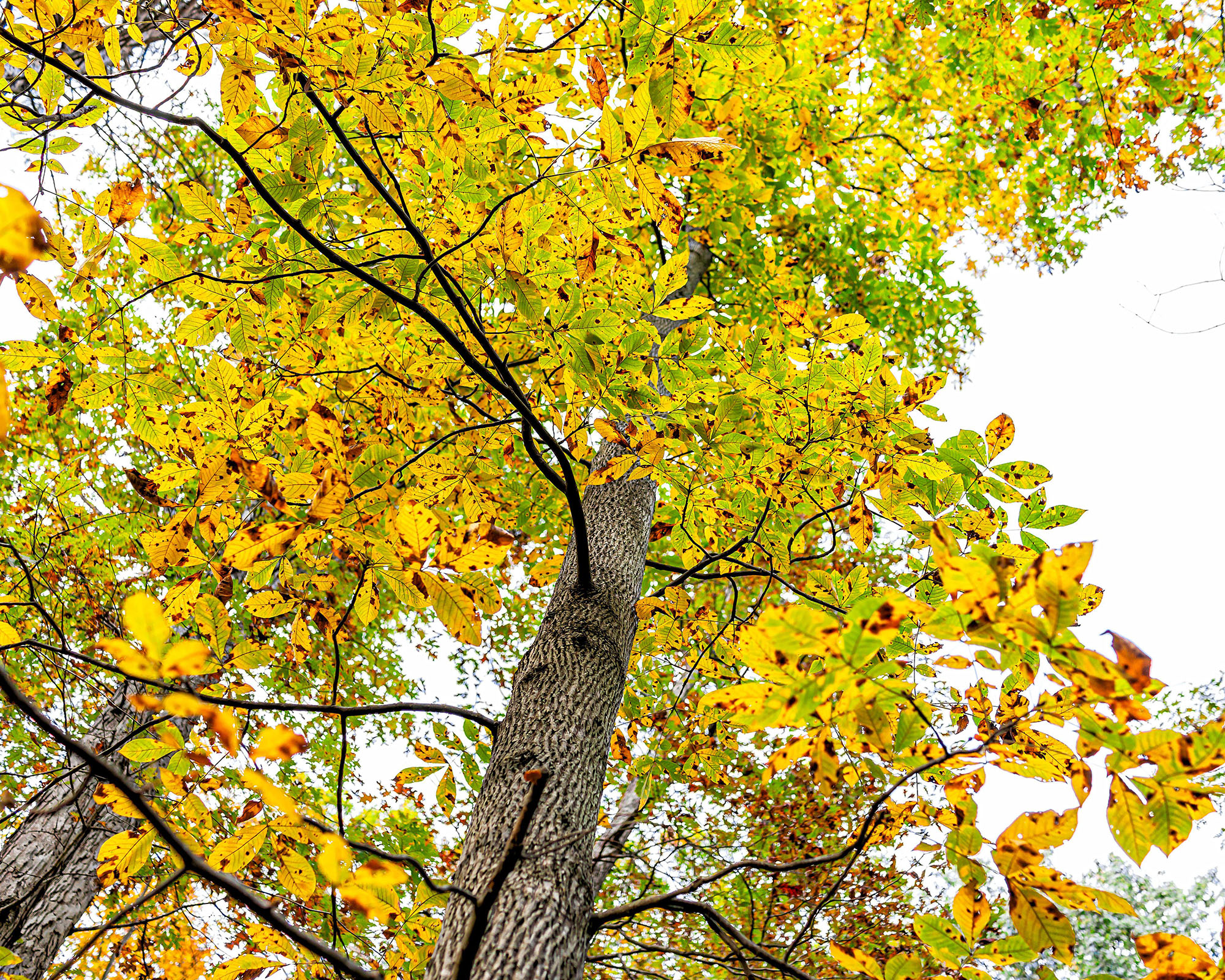
Which pecan tree variety is best for my region?
Varieties should be adapted to the region they are grown, and on a climate-appropriate rootstock. It’s best to go to a specialist supplier, who will be able to advise on the best rootstock and variety for your region.
'Good northern varieties are Kanza, Hark, Lakota, Major plus many more. These will ripen from late summer,' says Farmer David Hughes. 'For southern areas, Gafford, McMillan, Amling and Baby B are a few that have good disease resistance.'
Just like many other nut and fruit trees, pecans need a pollination partner to bear nuts. They are wind pollinated and have male and female flowers on the same tree during spring.
In Type 1 trees, male catkins shed their pollen before the female flowers appear. Type 2 trees produce the female flowers first. If you live in an area where lots of pecan trees grow, you can probably get away with only planting one tree, otherwise, a specialist supplier can help with selecting two compatible varieties.
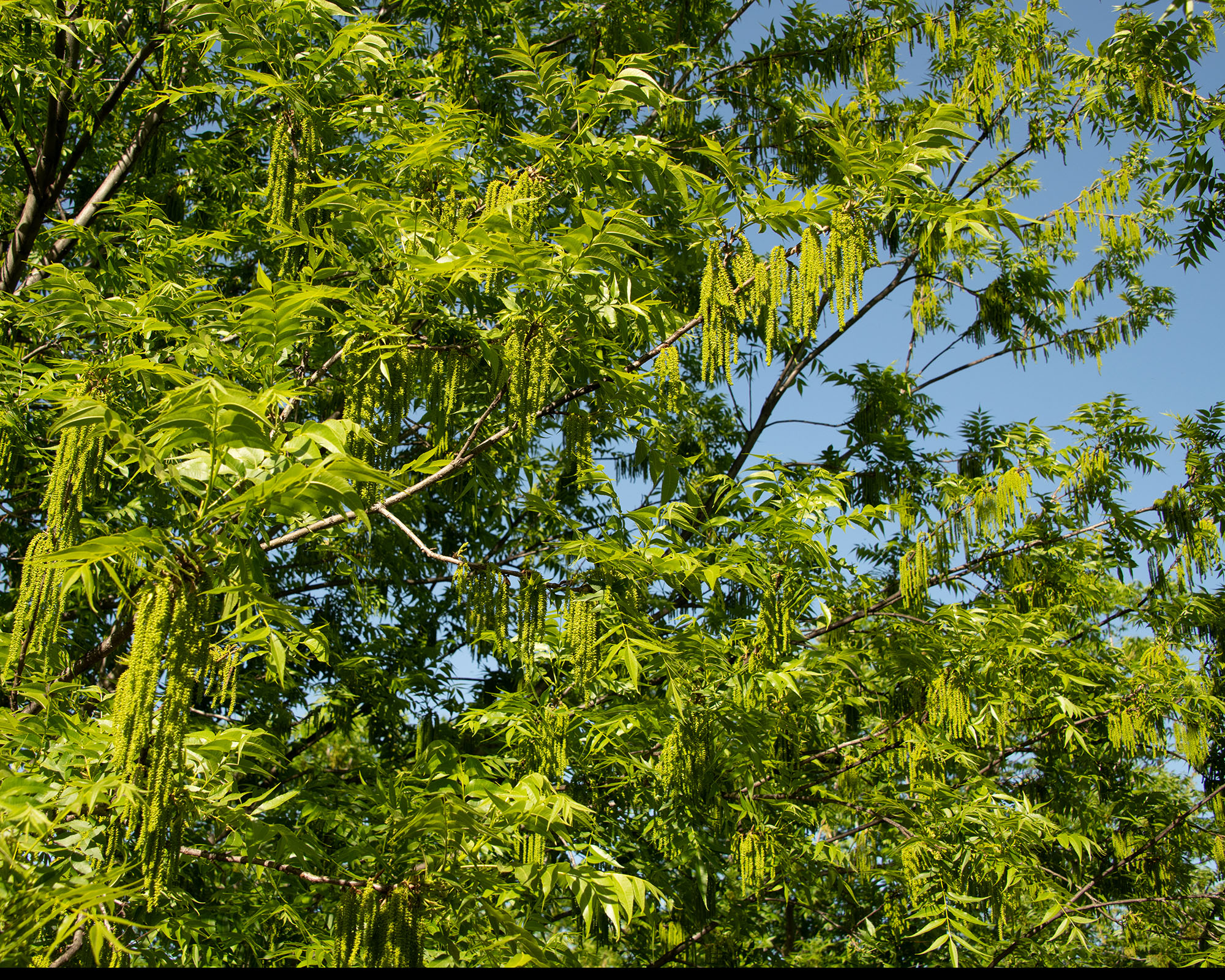
When, where and how to plant pecans
If planting more than one pecan tree, space them at 40 to 50ft apart. They like plenty of moisture but not wet feet, and do best on deep, rich soil types with a pH range of 6.5 to 7.
It's a good idea to plant bare root trees in winter when they are dormant. Container-grown trees are best planted in late summer to early fall or when they are dormant.
Dig a hole three times the width of the size of the pot, and just as deep as the rootball. Loosen the soil around the hole with a fork. Soak the rootball thoroughly before planting – a bucket is good for this.
Plant the tree level with the highest lateral roots at, or just under, the soil line. 'It’s better to plant too shallow than too deep, otherwise the trees are unable to develop adequate brace roots,' says the University of Georgia.
The taproot of bare roots should be pruned back by a third to stimulate new root growth, there is no need to do this with container-grown pecans.
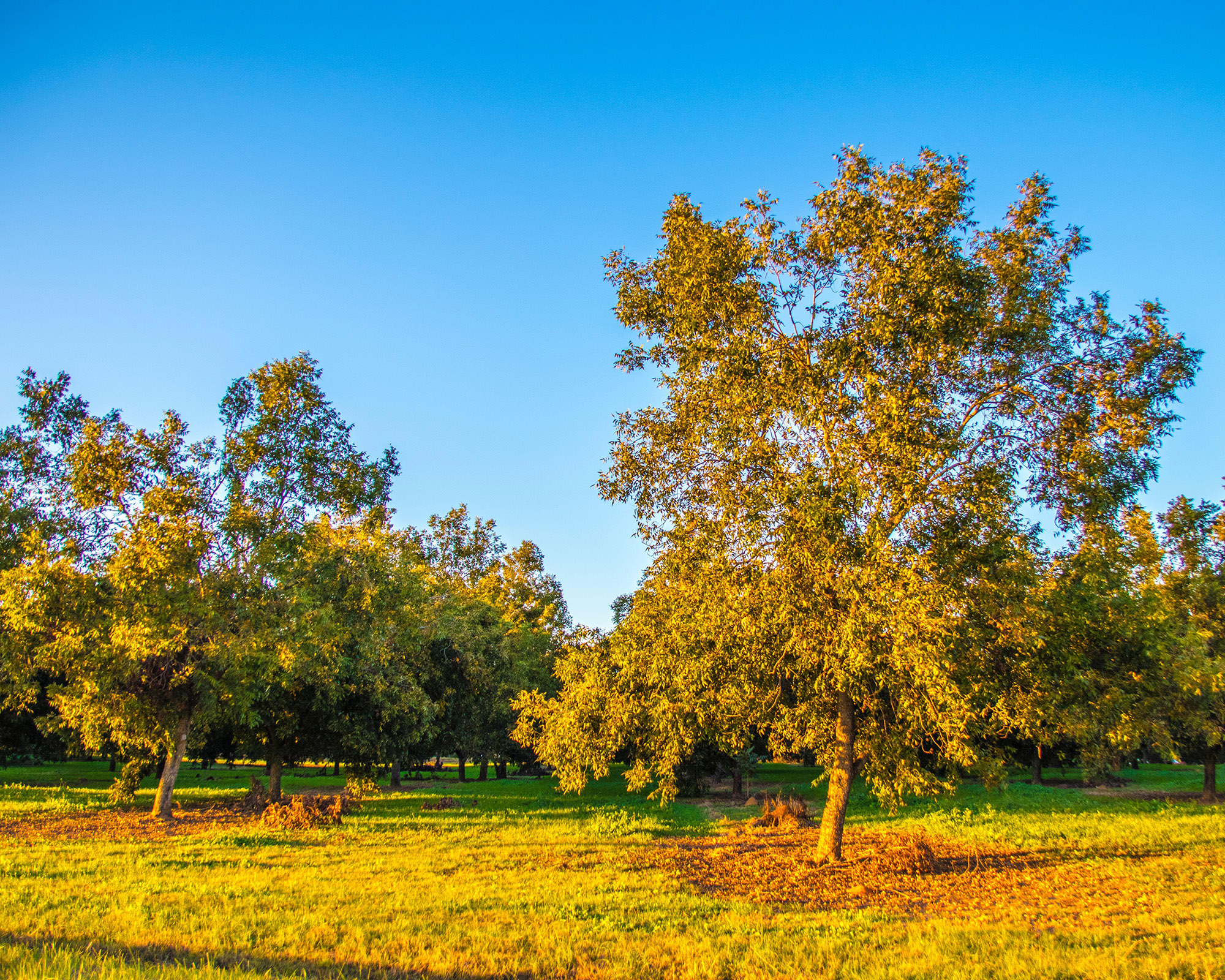
Pecan tree care tips
You couldn't call pecans low maintenance trees exactly, as they need full sun, lots of irrigation, regular fertilization (after the first year of planting). And young trees should be caged with chicken wire to protect them from rabbits and deer.
Young pecan trees need be pruned in late winter each year to help them develop a strong framework – you’re aiming for a central leader shoot with four to six lateral branches.
Cut back the top third of the branches every year for the first five years. This sounds drastic but it will make them good performers in the long run. Ensure there is a central ‘leader’ or main upright branch – if yours has two of these, choose the best one and remove the other.
Once pecan trees reach nut-bearing maturity, they only require minimal pruning. Every three years or when required, take out dead or damaged branches, and reduce crowding to allow sunlight and air to reach all branches evenly.
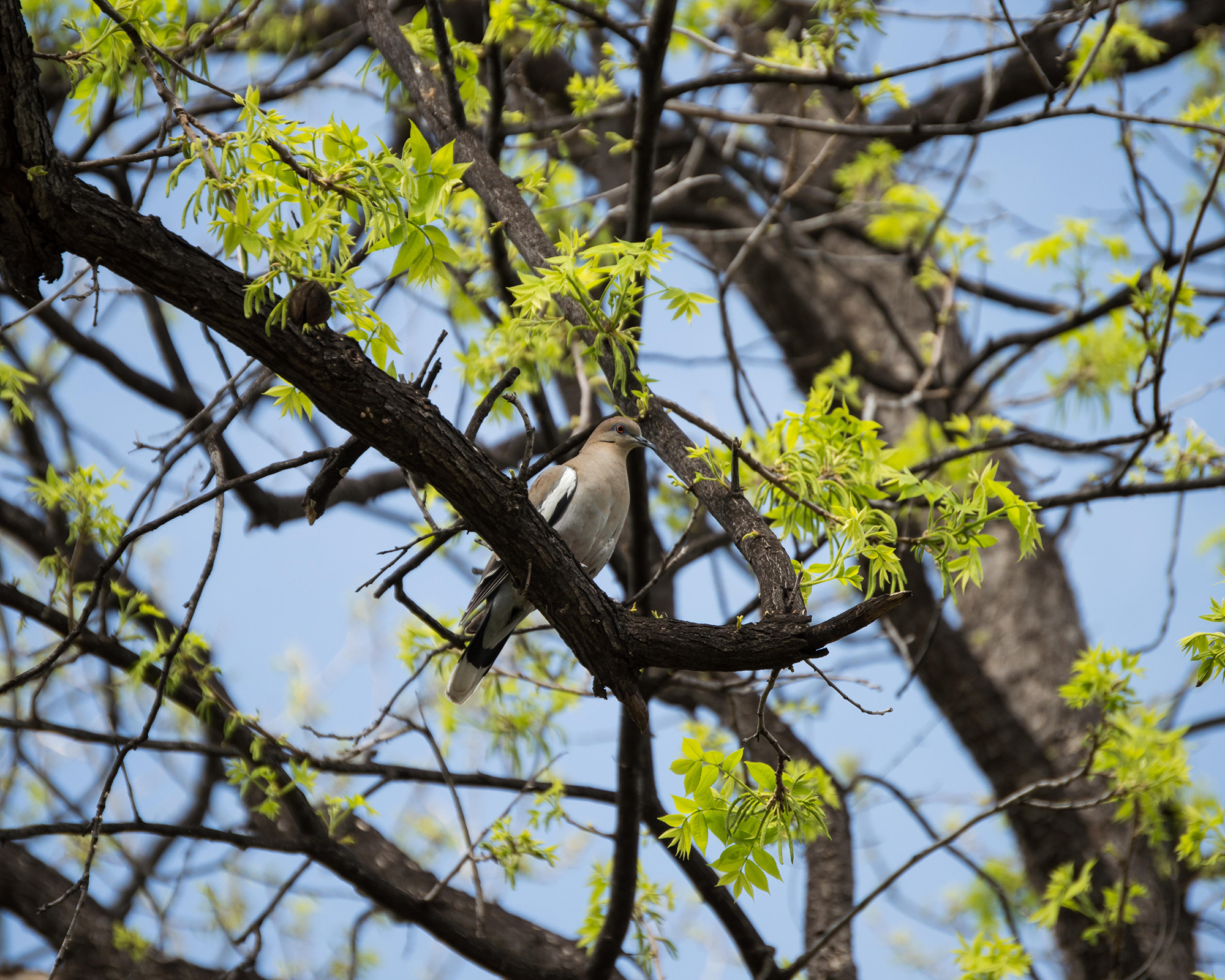
Common problems with pecan trees
'Disease resistance is important,' says Farmer Dave. 'Pecan scab is the most problematic. There are other fungal diseases that can be a problem in very wet years but not life threatening.'
'Insect pests, while annoying are usually not so severe that you won’t get nuts. Squirrels on the other hand will need to be controlled, or they will eat all your pecans.' There are plenty of tips on how to get rid of squirrels in the garden in our dedicated guide, should you need a helping hand.
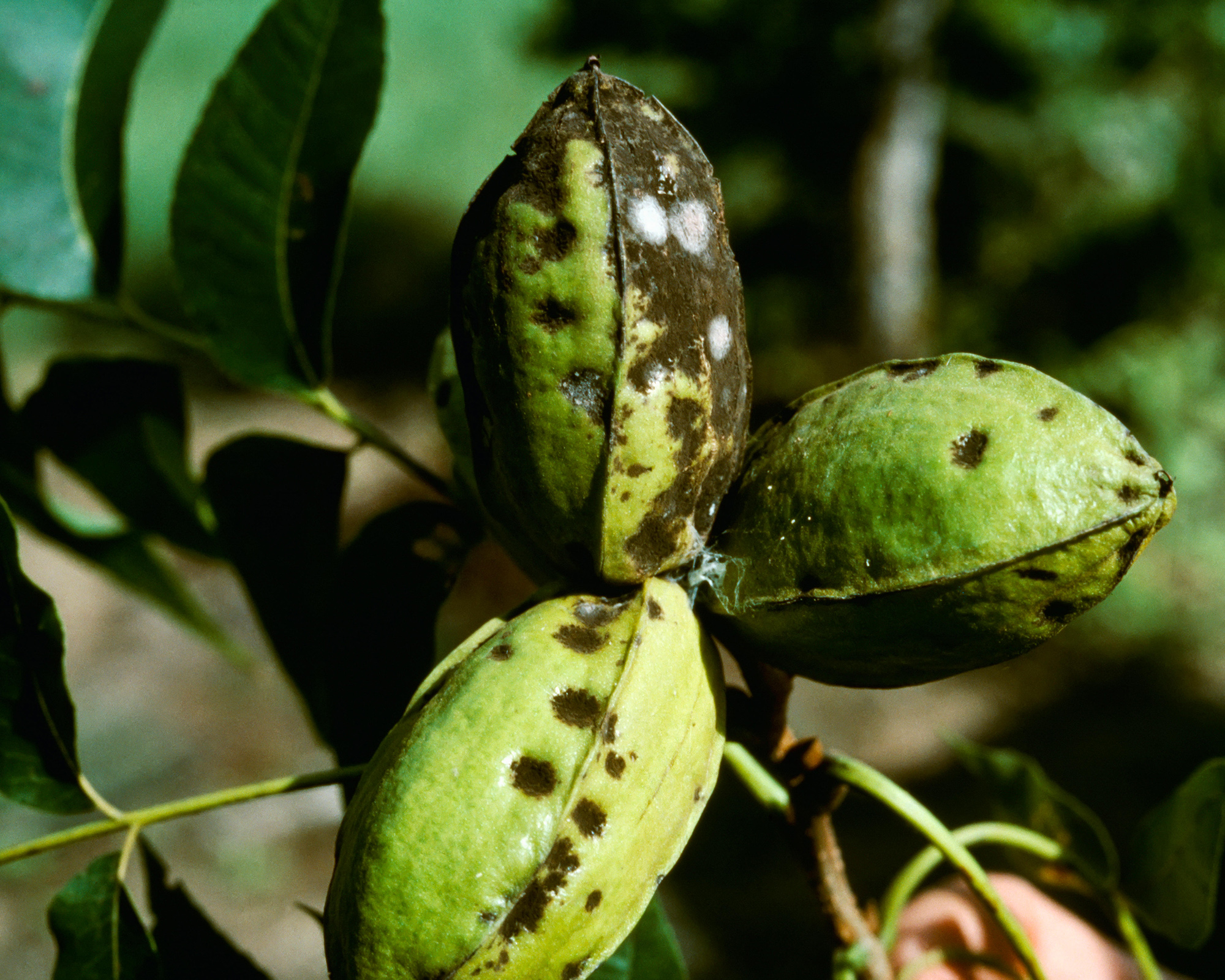
When to harvest pecans
Pecan trees will start producing nuts between 3-8 years, depending on the variety and the growing conditions. They’re ready to harvest when the green hulls turn brown and split open on the tree and start to drop in their shells to the ground. Green shells that fall prematurely to the ground, won’t ripen.
In late summer, start looking for pecan nuts on the ground under your pecan trees. You’ll need to get to them before they start to rot, or the local wildlife gets to them.
Collect the nuts and dry them with clean paper towels. Lay them out somewhere dry and cool for about a week. The nuts can be stored when they feel dry to your touch and break in half easily.
'Freeze the excess nuts in ‘on’ years so you can enjoy them in ‘off’ years. Pecans are perishable and should be kept refrigerated after shelling. The best long-term storage is freezing them, whole or shelled,' says Farmer David. Use airtight containers or zip-lock bags – they’ll keep for six months in the fridge and two more years in a freezer.
Fully dried pecans have a sweet, earthy flavor, and many people enjoy the nuts roasted, toasted, and candied. They’re the star ingredient in the South’s favorite dessert, pecan pie.

How to make more pecan trees
You can grow a pecan tree from pecan nut. 'That’s how commercial growers get their rootstocks, and it’s also how new and different pecan varieties are discovered,' say Perfect Plants Nursery.
- Once you've harvested the pecan nuts, store them in a plastic bag for 1-3 months in a refrigerator. Place a damp paper towel or some wetted sand in the bag to keep the nuts from drying out.
- In early spring, remove the seeds from cold storage and keep them at room temperature for another week or two, then soaked in water for a couple days.
- Once the seeds have split open they are ready for planting. 'Pecan trees have long tap roots, so it’s best to plant the seeds in the ground where you want the tree to be,' say Perfect Plants.
- 'If you do start with pots, use deep ones, since the root can grow as much as a foot downward before the top even emerges from the soil. Use a potting mix of half loam and half sand. Sow the seeds 3-4in (7.5-10cm) deep.
- By the following spring, the seedlings should be about a foot tall. They aren't very fast growing trees and it will take 5-10 years before it starts producing nuts.'

How many pecans do you get from one tree?
A mature pecan tree will produce 40 to 50 pounds of pecans per year. When properly cared for, the newly grafted tree should begin producing pecans when it is between five and eight years of age.
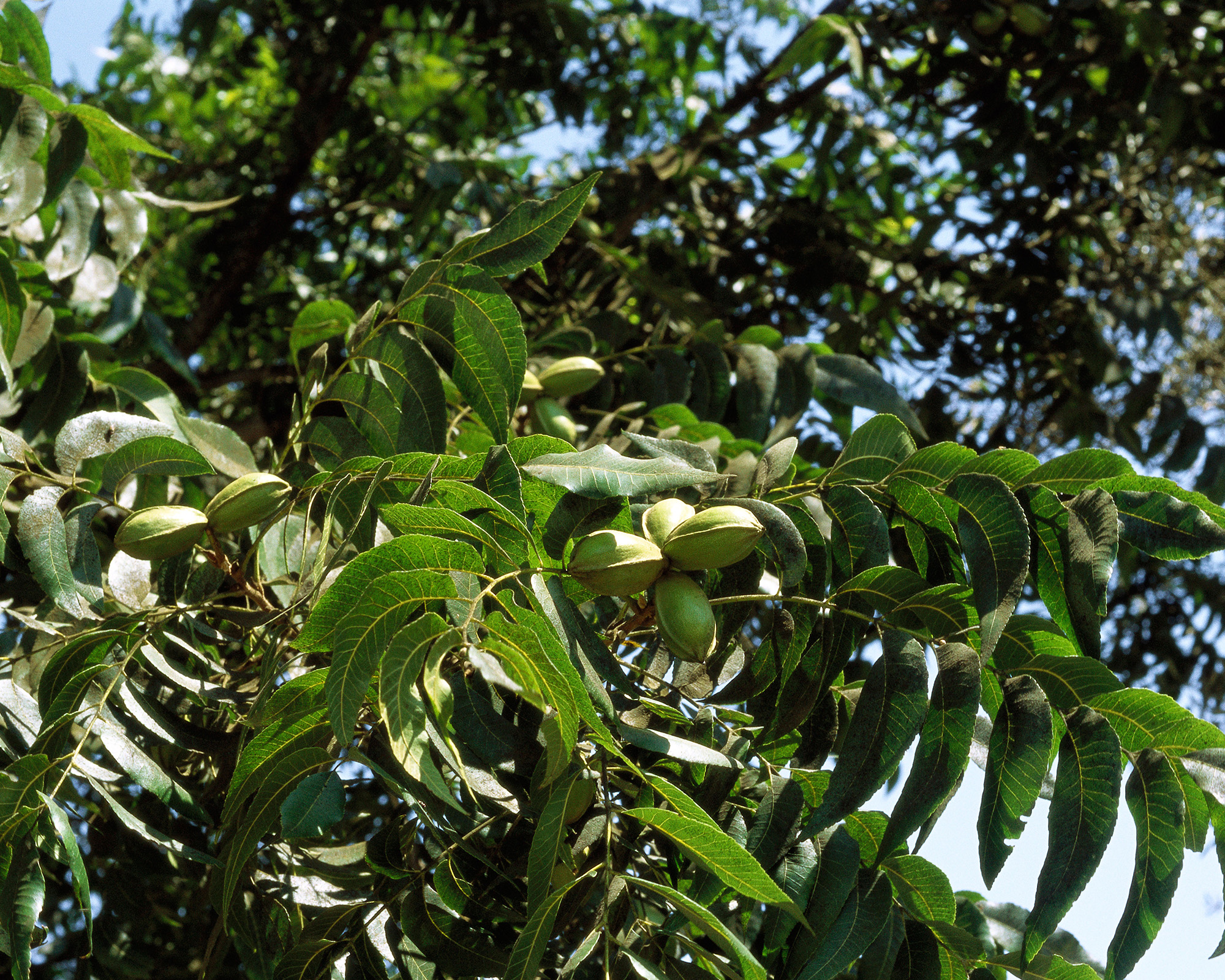
Where is the best place to plant a pecan tree in the US?
If you’ve ticked the box for having a large enough landscape to grow a pecan tree, next you need to assess whether your local climate is a good match for its growing needs.
'Pecans are native to the Mississippi Valley, from the very southern part of Wisconsin, to parts of central Mexico,' says Farmer David. 'They can grow all through the central Midwest and east into Pennsylvania and southwest to California.'
When choosing a tree for your garden, you'll find even at the extreme parts of its natural range, the pecan tree can be productive if the right variety is chosen.
According to US Pecans they are commercially grown in 15 states: Alabama, Arkansas, Arizona, California, Florida, Georgia, Kansas, Louisiana, Missouri, Mississippi, North Carolina, New Mexico, Oklahoma, South Carolina and Texas.
Pecans grow best in USDA zones 6-9, sometimes zone 5. Choose a location that receives full sun and that has deep, fertile soil.

Working at a garden center when she was 23, Sally realised straight away the therapeutic power of being around greenery and nurturing plants. She's horticulturally trained to degree level and has worked on gardening magazines for over a decade. Sally now gardens in Bournemouth, UK, zone 8a (H5).
